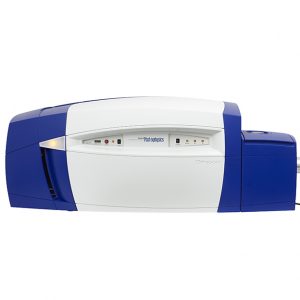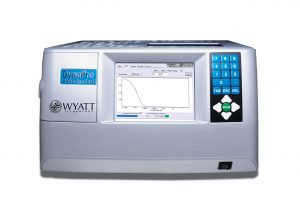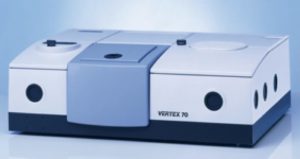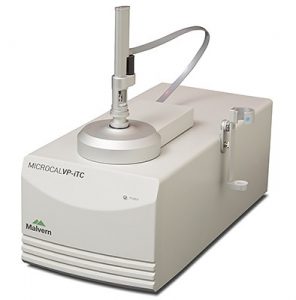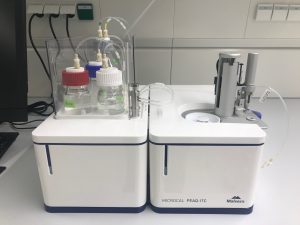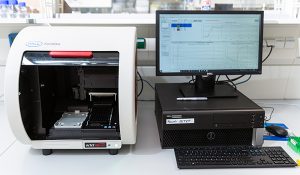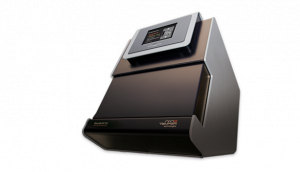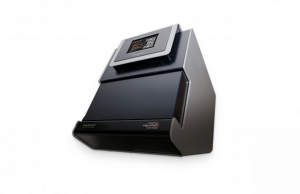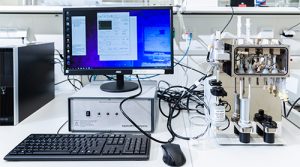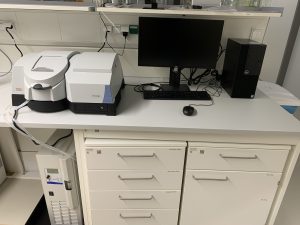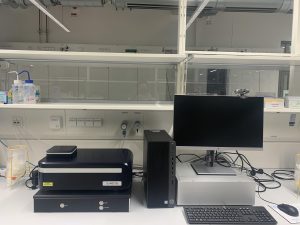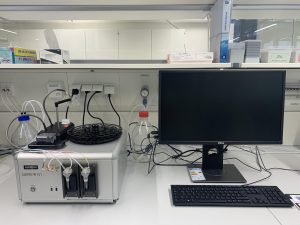Circular dichroism
Circular dichroism is the property of chiral molecules to absorb the right and left components of circularly polarised light to a different extent. CD spectroscopy measures this differential absorbance. Nearly all biological macromolecules are chiral and lend themselves to CD experiments. For example the secondary structure content of proteins can be analysed as alpha helices, beta strands and random coil have characteristic spectra. The temperature dependence of the CD signal gives information about protein stability and folding. Our CD spectrometer gives excellent quality scans down to 190 nm wavelength enabling quantitative secondary structure analysis. It is equipped with a thermostatted sample chamber for melting experiments.
Examples of applications are:
- Estimate the protein secondary structure content
- Detect conformational changes in protein that might result from changes in buffer composition or mutations in native protein
- Assess the thermal or chemical stability
- Analyze macromolecule-ligand interactions
Sample requirements: ≈200ul of sample at ≈0.5mg/ml, sample buffer should be compatible with CD measurment
